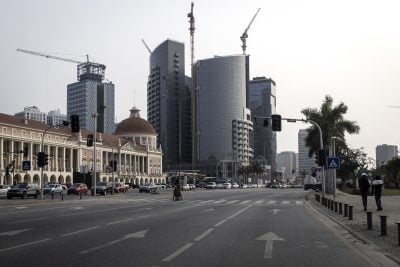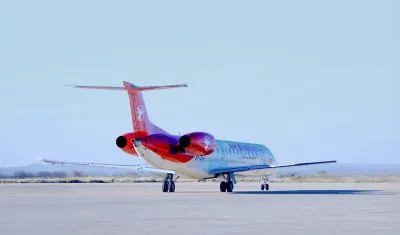Duncan Clarke’s latest book is very different from his previous works. Having treated us to a very readable, easily navigable large tome, The Crude Continent, which describes Africa’s oil and gas sector’s history in detail, Africa’s Future is a little more cerebral. It begins with the premise that there is an urgent need to understand Africa’s mysteries in order to calculate what lies ahead. To do that, Clarke counsels that we must reappraise the continent’s nature and its past, dispensing with preconceptions and prejudices.
Clark’s was born and raised in Zimbabwe (then Rhodesia) and now lives in South Africa – but you do not need to know his background to sense his affiliation with the continent.
Global Pacific & Partners, the firm he founded and still heads, is an advisory firm with a global reach – but clearly an African focus. It tends to specialise in working with the hydrocarbon sector, hosting many of the continent’s most important conferences – but Clarke’s curriculum vitae is a lot broader than simply being an oil industry analyst. He tells us that he wrote this book in his Johannesburg study in front of a print of Aaron Arrowsmith’s 1802 map of Africa. Commenting on the map, he admires its “magnificent cartographic insight” as to what the world knew of Africa some 210 years ago. That was – he notes wryly – not a lot.
This book’s first part, Survival in Africa, sets out to define Africa’s economies, from their distant past to their fragile present. It is, in Clarke’s own words, an attempt to “sketch the pathways to the present”.
It seems that Clarke has little patience for what might be described as conventional economic thinking. He expresses real doubt that data-driven correlates or econometric models present an accurate or complete explanatory theory that might answer the two key questions he poses: “What processes created the complexity and multiplicity of economic forms today that provide sustenance for over a billion people in Africa? What will shape the continent’s economies and its economic future?”
This part of the book ends with a note of caution. Clarke writes: “There have been many economic fallacies and myths pedalled in and about Africa’s economies and much future promise promulgated by economists, writers, analysts, media pundits and populists. Few command the relevant numbers and boundaries that have imprisoned Africa’s economic drama.”
Fewer still, having read this book or listened to Clarke speak about Africa, would describe the author as an Afro-pessimist. Rather, his writing demonstrates a determination to afford Africa the courtesy of objective reasoning and avoid the romantic posturing that has, in the past, resulted in so many false dawns.
Indeed, the author himself notes in the preface: “When intuiting the economic future there must be no delusion about the naïve images and shallow critiques based on Afro-pessimism or its counterpart of equally illusionary Afro-optimism. Both are offered from time to time in place of rigorous, critical thinking.”
Antiquity revisited
In part two of the book, Clarke tracks back to mankind’s birth in the continent that is ‘the cradle of humanity’. What the author is seeking is evidence that might link the various means of prehistoric economic survival that developed in early Africa to systems that still reverberate today, in this era of modernity.
Even in modern times, Clarke notes, ancient Stone Age cultures persist. He points to the Khoisan hunter-gatherer mode that at one time ranged across tropical Africa (at that time including the verdant Sahara region) until the arrival of the Bantu peoples.
Now the Khoisan occupy a very much more limited territory in Southern Africa, principally Botswana, but the austere subsistence economic mode that has evolved indicates one based on lineage and extended family systems.
Clarke also tells us that the various myths or traditions of origin found in Africa “typically set down the benchmarks for a culture – the rules for survival and guidelines for relationships with nature and social groups.” He also argues that no single or typical proto-economic system in Africa resembles those of the West. “This fact alone,” he warns, “should provide a salutary warning to those seeking to transfer the modernist model onto Africa’s economic template.”
A chapter, entitled ‘Stone Age: Triumph and Beyond’, takes the reader on an express safari that describes a history of Africa from the time that technologies emerged allowing permanent riparian settlements. Then, around 6,000 years ago, followed the development of the first food-producing economies, animal husbandry became established and new pastures on Africa’s grasslands gave rise to early kingdoms, states and even empires. “Different strategies of survival followed these patterns of evolution across diverse habitats, social structures and viable means of economic activity,” Clarke explains.
He then goes on to tackle slavery’s “early and great longevity”, specifically in the region of the Great Lakes of Eastern Africa before Arab slavers entered the market and established the trans-Sahara slave routes to supply around eight million people to markets in the Mediterranean and Islamic world.
This, of course, predates the era when European slavers took some 13 million slaves from Africa to the New World, itself a prelude to the colonial era. Clarke makes the point that “despite its cruel consequences, the slave trade facilitated the entry of more varied products, crops, commodities and technologies into Africa, in a brutal exchange as historians have noted, while the kingdoms of West Africa and the Sahel made use of these exchanges to acquire weapons and power”.
Shifting the geographic focus southwards, the author provides a study of the old empire of Monomotapa, located south of the Zambezi River (i.e. Zimbabwe), and this empire’s interaction with both the Moors and Portuguese. But, as he makes clear, every African society is different and has its own character and precepts.
The post-colonial state
Part three of this book brings us to the present, or near present, with a study of the contemporary economic landscape. Clarke posits that many reports on African economies, from the likes of the World Bank, UNEC, AfDB, AU, etc, have little to say regarding the various modes of subsistence and survival found in the continent.
He writes: “These post-war modernist institutions [World Bank, UNEC et al] treat Africa as one macro-entity, as if it existed as such, with disaggregation offered at best at the level of the nation state, region or industry (energy, banking, tourism, services and so on).”
And even in this age of modernity, within Africa exist throwbacks in time. Clarke draws the reader’s attention to the fact that millions of African villages are still led primarily by chiefs and headmen, clans or cohorts. He also writes: “Residual composites of old kingdoms, courts, dynasties, sultanates and even princes (many in Nigeria) remain present in large parts of the continent.”
The fourth and final part of this enthralling book both provides a diagnosis of the Africa’s economic travails – in other words what went wrong – and then a prognosis of possible trajectories in the concluding chapter. Accepting that interpreting Africa is a “cumulative game”, Clarke provides his estimation of a number of texts, one in particular coming in for a grilling.
Clarke takes issue with a 2011 report from Renaissance Capital, Africa: The Bottom Billion becomes the Fastest Billion. If there were an award for bullish optimism, it might well go to this study, he states.
He lays the blame on “our old economics friend”, the Rostow model. Created 50 years ago by a US economist, WW Rostow, the Rostow Model of Development suggested that it was possible for all countries to break the vicious cycle of poverty and develop through five linear stages, but he based his research on the histories of mainly European economies, not African.
So is Clarke right to be so dismissive of what he says has become a dogma in official and corporate worlds, i.e. that Africa is almost guaranteed to experience high economic growth? Only time will tell, but in Clarke’s opinion “Africa’s lions (or, if you like, corporate animals in the shape of elephants, buffalos, leopards, or rhinos – many ‘big five’ labels could be applied), will not alone inherit Africa’s economic earth.
“By 2050, there will still be large economic remnants of pre-modern Africa in place, many more urban poor and a mix of subsistence or survivalist economies still prevailing across the continent.”
Want to continue reading? Subscribe today.
You've read all your free articles for this month! Subscribe now to enjoy full access to our content.
Digital Monthly
£8.00 / month
Receive full unlimited access to our articles, opinions, podcasts and more.
Digital Yearly
£70.00 / year
Our best value offer - save £26 and gain access to all of our digital content for an entire year!

 Sign in with Google
Sign in with Google 




